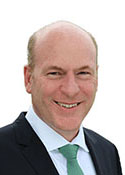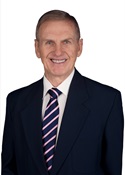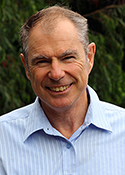North Sydney
Margin: Liberal 15.4%
Region: Inner Sydney, New South Wales
In a nutshell: The Liberals’ hold on North Sydney has only ever been disturbed by independent Ted Mack in the 1990s, and was not threatened in the by-election that followed Joe Hockey’s resignation late last year.
Candidates in ballot paper order

|
STEPHEN RUFF SHARON MARTIN ARTHUR CHESTERFIELD-EVANS TRENT ZIMMERMAN EDDY KU PETER HAYES DANIEL LEAHY JAMES COFFEY |
North Sydney encompasses the affluent and strongly conservative suburbs of Sydney’s inner northern harbourside, and was the scene of one of three by-elections in the past term of parliament following the resignation of Joe Hockey. The electorate encompasses the harbour from Kirribilli and the Sydney Harbour Bridge at the eastern end to Hunters Hill in the west, and extends northwards through Lane Cove and Willoughby to Chatswood. The redistribution adds most of the suburb of Cremorne at the eastern end from Warringah, while transferring a part of Chatswood to Bradfield in the north, with both changes affecting around 6000 voters. The electorate ranks second behind Malcolm Turnbull’s seat of Wentworth as the wealthiest in the country, and is accordingly unwinnable for Labor, although its record of Liberal control was interrupted for two terms in the 1990s by independent Ted Mack.
When created at federation, North Sydney extended through the entirety of modern northern Sydney all the way to the Central Coast at Lake Macquarie. Most of this territory was ceded to Parramatta in 1906, but North Sydney continued to cover the length of Sydney’s northern beaches. It would not truly resemble the modern electorate until 1922, when the northern beaches were ceded to the new electorate of Warringah. The member for North Sydney from 1922 to 1949 was Billy Hughes, Labor-turned-Nationalist Prime Minister from 1915 to 1923, who had moved from West Sydney to Bendigo in search of a seat he could win as a conservative in 1917, before North Sydney provided him with a safe seat closer to home.
With the expansion of parliament in 1949, North Sydney contracted into a compact area from Kirribilli north to Castlecrag, and Hughes moved to the new seat of Bradfield. The area’s relatively stable population has meant the electorate has tended to expand in redistributions since that time. The Liberals often held the seat by modest margins through to 1961, but their position tended to strengthen thereafter. However, their grip slipped in 1990 when John Spender, who had come to the seat in 1980, was unseated by Ted Mack, the local mayor and a two-term member for the corresponding state seat of North Shore. Mack’s margin was cut from 7.7% to 1.8% in 1993, and he did not seek a third term in 1996, saying he did not wish to receive the parliamentary pension that would then be available to him. In Mack’s absence, the seat was easily recovered for the Liberals by Joe Hockey, who had previously been a policy adviser in the state governments of Nick Greiner and John Fahey.
Joe Hockey rose to cabinet status as Workplace Relations Minister in the final year of the Howard government, a role he was given in the forlorn hope that his friendly image would help the government sell its unpopular WorkChoices reforms. He rose to the position of Shadow Treasurer in February 2009 in place of Julie Bishop, who was seen to have struggled in the role, and it was widely anticipated he would succeed Malcolm Turnbull as leader when a party revolt erupted over his support for the government’s emissions trading scheme. However, a tactical blunder in promising a conscience vote on the ETS legislation was followed by an unexpectedly weak showing in the leadership ballot, in which he ran third behind Turnbull and the ultimate winner, Tony Abbott. He nonetheless retained the Treasury role in government, but his political stocks were soon devalued after the disastrous reception to his debut budget in May 2014. Scott Morrison replaced him as Treasurer when Abbott was deposed in September 2015, and he delined the offer of an alternative position in cabinet, instead announced his decision to resign from parliament the following week.
The Liberal preselection for the ensuing by-election was won by Trent Zimmerman, the party’s acting state party president and a former staffer to Joe Hockey, who more recently had been deputy chair of the Tourism and Transport Forum. Zimmerman had a 47-35 win in the preselection ballot over John Hart, chief executive of Restaurant and Catering Australia. The haste with which this process unfolded aroused considerable controversy within the party, which broadly reflected a factional struggle between the dominating alliance of moderates and the Centre Right on the one hand, and the marginalised “religious Right” on the other. Hart won support in the preselection vote from conservative elements galvanised by displeasure at the branch membership’s lack of involvement in the process, although media reports had described him as an ally of Joe Hockey’s. When the by-election was held on December 5, the Liberal vote was down on the election result by 12.8% against a field of 13 candidates that did not include Labor. The second-placed candidate was Stephen Ruff, an orthopaedic surgeon at Royal North Shore Hospital, who outpolled the Greens to finish second with 18.8% of the vote. Zimmerman’s victory made him the first openly gay person ever elected to the House of Representatives.
The Greens candidate is Arthur Chesterfield-Evans, who was an Australian Democrats member of the state’s Legislative Council from 1998 to 2007.
Analysis by William Bowe. Read William’s blog, The Poll Bludger.


